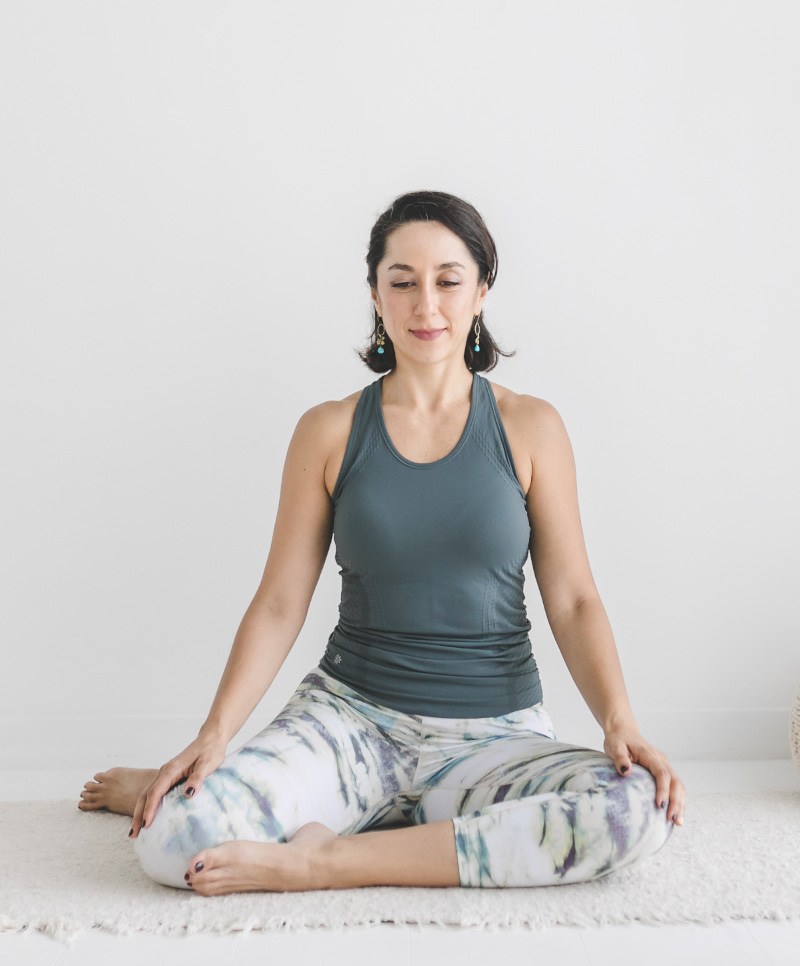Physiological and Psychological Impact of Yin Yoga
We know yin yoga is gentle and meditative, and it is known that one after-effect of the practice is to relax the body and mind. But how does it relax the mind and body? What happens within? What is its impact from a physiological and psychological standpoint? If you’re considering an online yin yoga teacher training, we invite you to understand the know-how behind this as many students will ask you, time and again, about its impact. While a yin yoga instructor online training course will take you through the benefits of it in detail, this article gives you a peek into what you should know to start with.
Psychological impact of Yin Yoga

Being a practice where time it’s your best ally (you hold poses -in stillness- for long periods of time), yin yoga helps to improve your mindfulness, releasing stress and anxiety. In fact, it provides similar benefits as meditation such as reducing stress, stress-related illness, blood pressure, risk of heart disease and problems associated with diabetes. This study deep-dives into how meditation has an impact on cardiovascular risk reduction. Similarly, the mindfulness developed with the practice of yin yoga, can reduce depression, anxiety, and turns off the flight-or-fight response. Several studies, like “Effects of Mindfulness on Psychological Health: A Review of Empirical Studies”, concluded the positive impact of mindfulness and how its cultivation facilitates adaptive functioning. Another five-week yin yoga intervention study showed reduced physiological and psychological risk factors associated with non-communicable diseases (e.g. cardiovascular disease).
Yin yoga has a positive and profound impact on the nervous system. When each posture is held for a few minutes, we are providing the nervous system with a certain stimulus. The targeted area’s tissues and joints are receiving a deep stretch. This stimuli is detected by the sensory nerves around the tissues, and these nerve signals are sent to the spinal cord and brain for processing. Furthermore, there are sensory nerve endings in the joint ligaments and capsules which also send information about the range of motion, muscle memory and strength to the nervous system. Over time, this improves our awareness of our body parts and also keeps our nervous system relaxed rather than in overdrive.
Physiological and Biological impact of Yin Yoga
From a biological and physiological standpoint, the effect of yin yoga on the connective tissues, and the effects within the muscles, nervous system, immune system, endocrine system and even within the epigenetic system are remarkable.
Yin Yoga uses the application of a distraction force. Distraction (often called traction) is the application of long-held stress that has the capacity to pull bones apart. When we do a forward fold, like seated forward bend, distraction stress is applied along the spine. This stress can help strengthen the bones and ligaments along the spine. It is through a thorough understanding during your yin yoga certification that you will be able to explain the biological impact to your future students.
Now, if a joint is overly contracted and the range of motion is limited, improving mobility first is more helpful. A study of contracture repair compared to holding postures for a short time (like the intense stresses we experience in an active yoga practice) with long-held, mild stresses like the ones experienced in a yin yoga practice. The researchers concluded,

“The longest period of low force stretch produces the greatest amount of permanent elongation, with the least amount of trauma and structural weakening of the connective tissues.”
The shorter, more intense stresses resulted in “a higher proportion of elastic response, less remodeling, and greater trauma and weakening of the tissue.” Thus, yin yoga practices proved to be more effective for joints suffering contracture than yang forms of yoga, whose main benefits are experienced in the muscles.
A static tissue stretch also has an anti-inflammatory and anti-fibrotic impact on the body. Thus, in a yin yoga practice, when a stretch is held for 3-5 minutes, there is a positive improvement in the body’s immune response and a reduction in the fibrotic (thickening or scarring of the tissue) restrictions to movement. During our yin yoga teacher training, we discuss (and experience!) more in detail these and other short and long-term effects of stressing tissues in a yin way.
It’s interesting to see that other health disciplines also use this long-held stress principle to release myofascial tension (MFR), which is known to improve the healing response. For example, Sphinx pose is used in a form of physiotherapy called the Mckenzie Therapy for people suffering from a bulging disc. Considering the deep impact of yin yoga on every system, an online yin teacher training is useful to explore as a teacher. Equip yourself with a deeper understanding and the right knowledge to teach your students about all the physiological and psychological benefits of yin yoga.

Contact us if you are interested in learning more about the healing benefits of yin yoga or discovering how you can make it part of your lifestyle. At Sampoorna Yoga Online Academy, you will find specialized help focusing on your well-being, no matter where you are.


